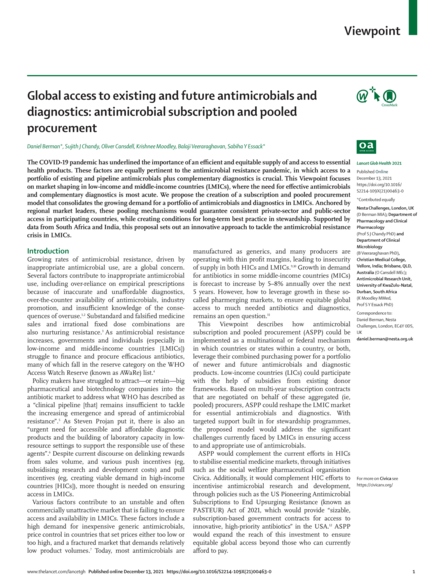Global access to existing and future antimicrobials and diagnostics: antimicrobial subscription and pooled procurement
Lancet Glob Health 2021 Published Online December 13, 2021 https://doi.org/10.1016/S2214-109X(21)00463-


